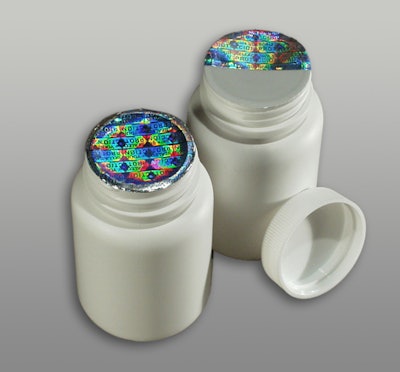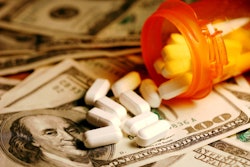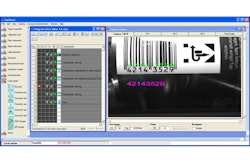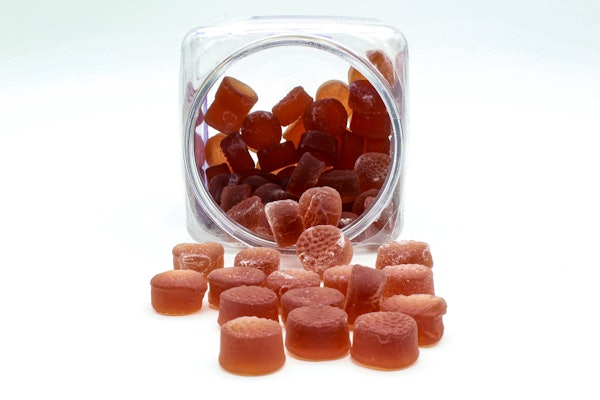
Citizens and corporations alike face a dangerous and growing public health crisis that threatens society with substantial personal and financial costs. This threat to public health does not limit itself to back alleys and the seedy underworld. It finds its way into our homes through our Internet browsers and into our communities through a sophisticated distribution system. The crisis we face is the threat of pharmaceutical fraud associated with drug counterfeiting, diversion, and tampering.
The escalation of fraud associated with pharmaceuticals costs society in lives and dollars lost. The U.S. Chamber of Commerce reports that the pharmaceutical industry loses more than $30 billion globally to counterfeiting each year. While the costs are high, the risk to health is even higher; the U.S. Center for Medicine in the Public Interest estimates that 15% of medicines sold worldwide are fake, killing an estimated 700,000 people a year. Unfortunately, there are no signs that the criminals associated with pharmaceutical fraud are slowing down. According to the FDA, the crime rate for pharmaceutical counterfeiting and package tampering was up 11% in 2010 from the prior year.
The proliferation of counterfeit drugs is propelled by powerful drivers on both the demand and supply side and only a sophisticated and comprehensive security strategy that empowers consumers and law enforcement alike will be able to put a dent into this growing and troubling challenge.
Factors driving pharmaceutical fraud
Consumers in developed economies have long assumed that they are immune from the threat of fraud when it comes to pharmaceuticals. Strong regulations in the U.S. and the European Union associated with all phases of drug manufacturing and packaging, complemented by traditionally tight distribution have encouraged consumers to enjoy comfort and complacency when considering the potential hazards of consuming counterfeit or tainted drugs.
Unfortunately, our environment is changing. On the demand side, consumers know more about the drug treatments they want and the brands available for those treatments than ever before. That knowledge and awareness is driven by two main factors:
• Demand for lifestyle drugs. The pharmaceutical industry has made enormous progress in recent years toward extending our expectation of pharmaceuticals: we do not just look to pharmaceuticals to heal us when we are sick, we also expect drugs to improve the quality of our lives. This expectation is evidenced by the phenomenal success of lifestyle drugs treating conditions such as baldness, impotence, wrinkles, or acne.
• Demand for specific brands. Direct-to-consumer advertising by drug companies has raised customer awareness of and demand for drugs; we buy Viagra or Cialis and not erectile dysfunction medication. Consumer awareness of specific brands imparts tremendous market power and value to a favored and recognized name.
Consumer preference for specific remedies and specific brands has not escaped the attention of counterfeiters. Brand-name drugs carry a high price tag, high demand, and big opportunities for profits in the eyes of the fraudster. Beyond a powerful profit motive, the fraudster is also better positioned than ever to supply counterfeit, diverted, or tampered pharmaceuticals to the unwitting consumer. Some key enablers to the fraudster include:
• Sophisticated imaging and printing technologies that are inexpensive and readily available provide criminals with tools for creating sophisticated counterfeit packaging and labels. These tools range from imaging scanners to sophisticated graphic design programs to high-resolution printers.
• Anonymous distribution channels offer the perfect advertising and distribution platform for global illegal activities; Internet marketplaces are cheap, global, and anonymous tools for promoting and distributing counterfeit, diverted, or tampered goods.
These factors contribute to lower profits and undermine brand integrity of major pharmaceutical firms. They also jeopardize the health and safety of millions who rely on authentic drugs for their well-being and quality of life.
Safeguarding pharmaceuticals
Drug companies and regulatory agencies can work together to establish a common framework that addresses the demand side of the fraud problem by empowering consumers to recognize fake drugs when they see them while giving brand owners the tools to police their supply chain. Each constituency has unique requirements that can be matched to available technologies.
Overt technologies for consumers are designed to be easily recognizable to the public and difficult to replicate by counterfeiters. They deliver unique visual features that a consumer can validate in a point-of-sale environment without the use of complicated readers or technology.
Covert and tracking technologies for brand owners allow a trained investigator in the field to authenticate a product using a tool. They include hidden features that can only be detected with commercially available microscopes or specialized readers. They can also include serialization schemes that can track a particular product through the supply chain via a bar code or RFID tag to make sure that it has passed through appropriate channels on its way to the consumer
Public action also needed
There are, however, initiatives that consumers and policymakers should implement in order to ensure the pharmaceutical products they obtain are not fraudulent. Steps include:
• Validating distribution channels. Consumers should be aware of where they are purchasing pharmaceuticals, especially when buying products via non-traditional channels such as the Internet. With little or no government oversight, and anonymity of buyers and sellers alike, the Internet offers would-be counterfeiters an ideal means for implementing illicit activities.
• Examining packaging for tampering. Consumers should examine all the packaging before ingesting the product. Look for misaligned lettering, broken seals, and dissolved ink.
• Adopting stricter penalties for legal drug counterfeit trafficking. Unlike the illegal drug arena, stricter standards and harsher punishments must be adopted for counterfeiters. In addition, transparency among relevant global agencies, such as customs, health authorities, police, and pharmaceutical industry representatives is required because without it, the ability to detect and thwart counterfeiters is limited.
The counterfeiting of pharmaceuticals is a serious, expensive problem and powerful drivers incenting fraudsters will only add to the scope and pervasiveness of this problem in the future. Authentication strategies tailored to the consumer and the supply chain are available and followed by many leading brand owners. While more brand owners should consider adopting similar strategies, perhaps the best course of action is for consumers themselves to recognize the scope of the problem and empower themselves to do something about it.
--By Adam Scheer, senior director, business development and strategic market, Advanced Optical Technologies group of technology company JDSU. Scheer has nearly a decade of experience in the authentication industry and is a speaker at industry events who currently serves as chairman of the International Hologram Manufacturers Assn.
The escalation of fraud associated with pharmaceuticals costs society in lives and dollars lost. The U.S. Chamber of Commerce reports that the pharmaceutical industry loses more than $30 billion globally to counterfeiting each year. While the costs are high, the risk to health is even higher; the U.S. Center for Medicine in the Public Interest estimates that 15% of medicines sold worldwide are fake, killing an estimated 700,000 people a year. Unfortunately, there are no signs that the criminals associated with pharmaceutical fraud are slowing down. According to the FDA, the crime rate for pharmaceutical counterfeiting and package tampering was up 11% in 2010 from the prior year.
The proliferation of counterfeit drugs is propelled by powerful drivers on both the demand and supply side and only a sophisticated and comprehensive security strategy that empowers consumers and law enforcement alike will be able to put a dent into this growing and troubling challenge.
Factors driving pharmaceutical fraud
Consumers in developed economies have long assumed that they are immune from the threat of fraud when it comes to pharmaceuticals. Strong regulations in the U.S. and the European Union associated with all phases of drug manufacturing and packaging, complemented by traditionally tight distribution have encouraged consumers to enjoy comfort and complacency when considering the potential hazards of consuming counterfeit or tainted drugs.
Unfortunately, our environment is changing. On the demand side, consumers know more about the drug treatments they want and the brands available for those treatments than ever before. That knowledge and awareness is driven by two main factors:
• Demand for lifestyle drugs. The pharmaceutical industry has made enormous progress in recent years toward extending our expectation of pharmaceuticals: we do not just look to pharmaceuticals to heal us when we are sick, we also expect drugs to improve the quality of our lives. This expectation is evidenced by the phenomenal success of lifestyle drugs treating conditions such as baldness, impotence, wrinkles, or acne.
• Demand for specific brands. Direct-to-consumer advertising by drug companies has raised customer awareness of and demand for drugs; we buy Viagra or Cialis and not erectile dysfunction medication. Consumer awareness of specific brands imparts tremendous market power and value to a favored and recognized name.
Consumer preference for specific remedies and specific brands has not escaped the attention of counterfeiters. Brand-name drugs carry a high price tag, high demand, and big opportunities for profits in the eyes of the fraudster. Beyond a powerful profit motive, the fraudster is also better positioned than ever to supply counterfeit, diverted, or tampered pharmaceuticals to the unwitting consumer. Some key enablers to the fraudster include:
• Sophisticated imaging and printing technologies that are inexpensive and readily available provide criminals with tools for creating sophisticated counterfeit packaging and labels. These tools range from imaging scanners to sophisticated graphic design programs to high-resolution printers.
• Anonymous distribution channels offer the perfect advertising and distribution platform for global illegal activities; Internet marketplaces are cheap, global, and anonymous tools for promoting and distributing counterfeit, diverted, or tampered goods.
These factors contribute to lower profits and undermine brand integrity of major pharmaceutical firms. They also jeopardize the health and safety of millions who rely on authentic drugs for their well-being and quality of life.
Safeguarding pharmaceuticals
Drug companies and regulatory agencies can work together to establish a common framework that addresses the demand side of the fraud problem by empowering consumers to recognize fake drugs when they see them while giving brand owners the tools to police their supply chain. Each constituency has unique requirements that can be matched to available technologies.
Overt technologies for consumers are designed to be easily recognizable to the public and difficult to replicate by counterfeiters. They deliver unique visual features that a consumer can validate in a point-of-sale environment without the use of complicated readers or technology.
Covert and tracking technologies for brand owners allow a trained investigator in the field to authenticate a product using a tool. They include hidden features that can only be detected with commercially available microscopes or specialized readers. They can also include serialization schemes that can track a particular product through the supply chain via a bar code or RFID tag to make sure that it has passed through appropriate channels on its way to the consumer
Public action also needed
There are, however, initiatives that consumers and policymakers should implement in order to ensure the pharmaceutical products they obtain are not fraudulent. Steps include:
• Validating distribution channels. Consumers should be aware of where they are purchasing pharmaceuticals, especially when buying products via non-traditional channels such as the Internet. With little or no government oversight, and anonymity of buyers and sellers alike, the Internet offers would-be counterfeiters an ideal means for implementing illicit activities.
• Examining packaging for tampering. Consumers should examine all the packaging before ingesting the product. Look for misaligned lettering, broken seals, and dissolved ink.
• Adopting stricter penalties for legal drug counterfeit trafficking. Unlike the illegal drug arena, stricter standards and harsher punishments must be adopted for counterfeiters. In addition, transparency among relevant global agencies, such as customs, health authorities, police, and pharmaceutical industry representatives is required because without it, the ability to detect and thwart counterfeiters is limited.
The counterfeiting of pharmaceuticals is a serious, expensive problem and powerful drivers incenting fraudsters will only add to the scope and pervasiveness of this problem in the future. Authentication strategies tailored to the consumer and the supply chain are available and followed by many leading brand owners. While more brand owners should consider adopting similar strategies, perhaps the best course of action is for consumers themselves to recognize the scope of the problem and empower themselves to do something about it.
--By Adam Scheer, senior director, business development and strategic market, Advanced Optical Technologies group of technology company JDSU. Scheer has nearly a decade of experience in the authentication industry and is a speaker at industry events who currently serves as chairman of the International Hologram Manufacturers Assn.



















